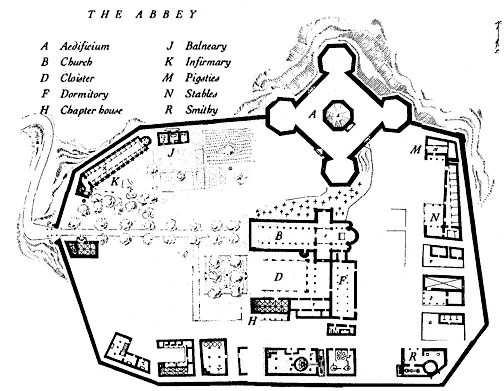
Grounds for Murder: Maps and Floor Plans in Mystery Novels
I love a good floor plan, especially when murder and mayhem are involved. Wait, let me backtrack a bit.
Our fascination with maps in books is a well-documented phenomenon here on Book Riot, but the mystery is another genre that has a unique and storied history with cartography. While this type of literary easter egg has waned in popularity, many mysteries from the early part of the 20th century contain a diagram of some sort, often as the frontispiece of the book. There are many examples of this. So, so, many.
Mystery novelists have been using maps as early on, most notably in 1908 with Gaston Leroux’s The Mystery of the Yellow Room. The narrator even breaks the fourth wall and says, “The plan of the ground-floor only, sketched roughly, is what I here submit to the reader,” before giving the rundown of the crime scene. On this diagram, I’ve highlighted the room where the crime was committed, the eponymous Yellow Room.
For me, it immediately signals what kind of crime fiction the book wants to be: a puzzle to be solved instead of a deep psychological dive into the characters’ psyche.You are challenged to participate in the solving process. And even though I almost never manage to guess the correct culprit, I still get a little thrill as I pore through a map and imagine the lay of the land. Agatha Christie made use of floor plans, such as in The Mysterious Affair at Styles, the first ever appearance of Hercule Poirot. The story involves strychnine poisoning committed in a spacious mansion, an overheard argument, and several people with motives for killing a kindly woman to get their hands on her money. One of the maps used in the story shows the second floor of the mansion. Every room is labeled, including the room where the crime is committed. You can also see which characters have ready access to the crime scene using three separate doors. There is another set of maps that are displayed in the novel, but I didn’t add them here due to potential spoileryness. Murder on the Orient Express is another Christie book that uses a floor plan, this time to illustrate the layout of a train car that is trapped in the middle of a snowstorm. This is an important detail, since it means that the culprit does not have any way to escape the train without showing tracks in the snow. The hinge to this mystery is not just the accessibility of the murder victim’s compartment, but also the accounts of various witnesses who may have heard movement and commotion due to their cramped circumstances. I’ve highlighted the part of the compartment where the crime was committed. Notice who has the compartment closest to it? Another big name during the Golden Age of Mystery is Dorothy L. Sayers, who uses a lot of extra-textual details for her esoteric mysteries. (True fact: I learned a coding cypher from one of her books and actually used it to hide passages in my teenage diary.) In Clouds of Witness, she uses the more traditional two-floor diagram of a hunting lodge to give life to her puzzle. I’ve pointed out on the diagram where the victim is found, outside of the first floor conservatory room. Like Orient Express, the plot relies deals with overheard scuffles and unreliable witness testimonies. Who is in which room at which time is important here. Very Clue-esque. Umberto Eco’s The Name of the Rose is an overcharged post-modern pastiche of the mystery genre, so it stands to reason that it features a souped up set of maps and crime scene diagrams as well. The first image shows the orientation of a 14th century abbey located in the mountains of Northern Italy. This map is essential for following Eco’s heavily convoluted plot. The frontispiece will inevitably get well-thumbed by the end of the novel. Sadly, I almost never see them in more contemporary mysteries. Mystery buff and professor G.J. Demko has collected examples of contemporary novelists making use of city and neighborhood maps to add context to their stories, but I’ve been stumped when trying to find recent novels that include crime scene floor plans. The most recent one I encountered is The Tokyo Zodiac Murders by Soji Shimada, a Japanese mystery originally published in the 80s, which has been republished in translation this year. Despite having quite a gruesome and occult premise, Shimada’s novel is essentially a puzzle mystery at heart,one that can be charcterized as “fair play.” Fair play mysteries pride themselves in giving all the relevant clues to the reader, and not withholding anything to be revealed at the last moment. The story itself challenges the reader to pore through the diagrams and come up with their own theories. Here, one of the deaths occurred inside a house that is locked from the inside, making the escape of the culprit impossible. This “locked room” setup is the same premise as Yellow Room, and Orient Express. Do you have examples of crime scene diagrams that you want to highlight? I would love to find out if more recent authors are still following this venerable tradition.

















